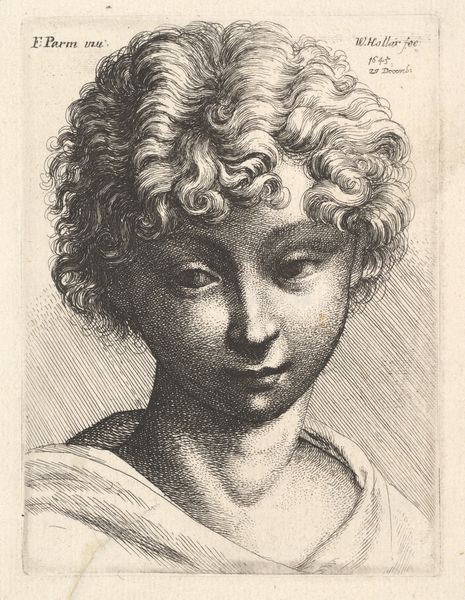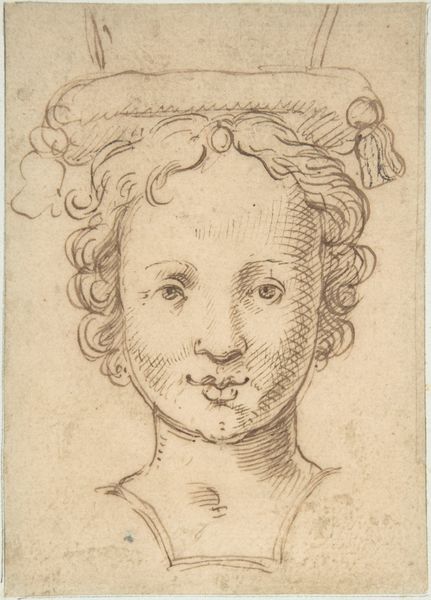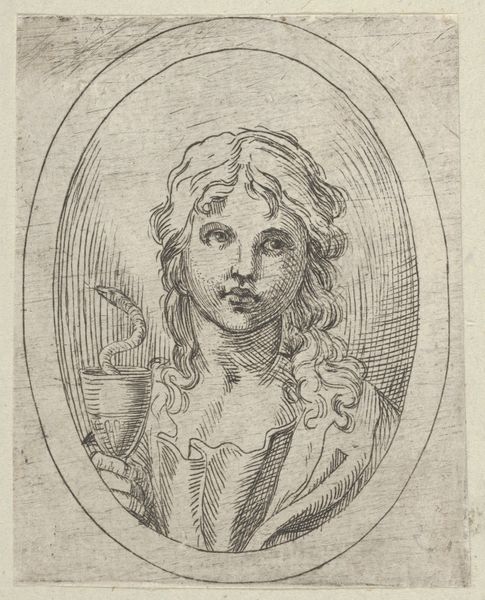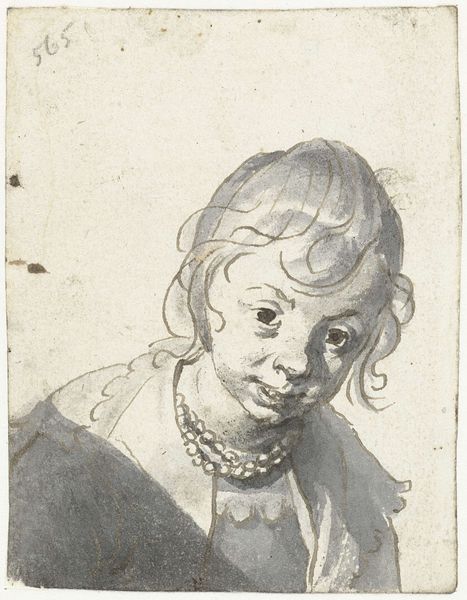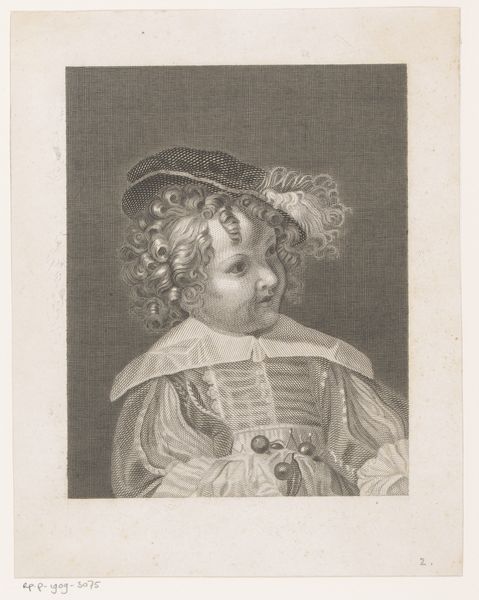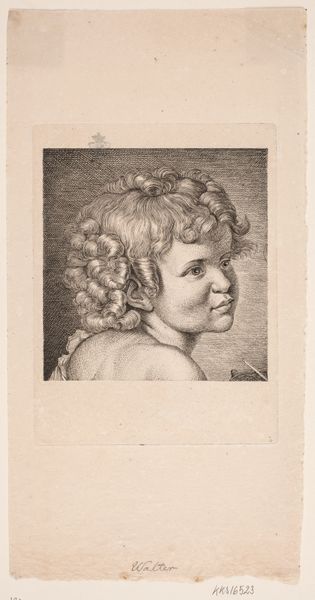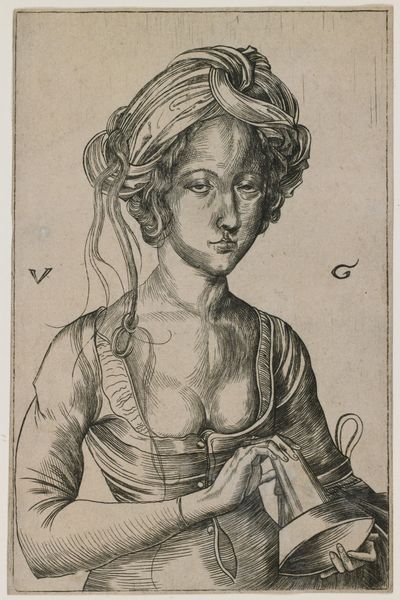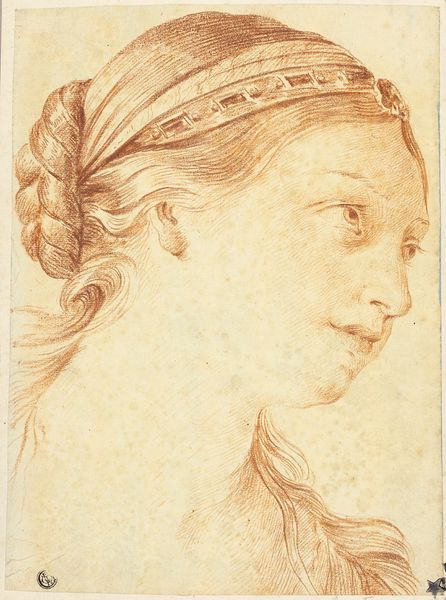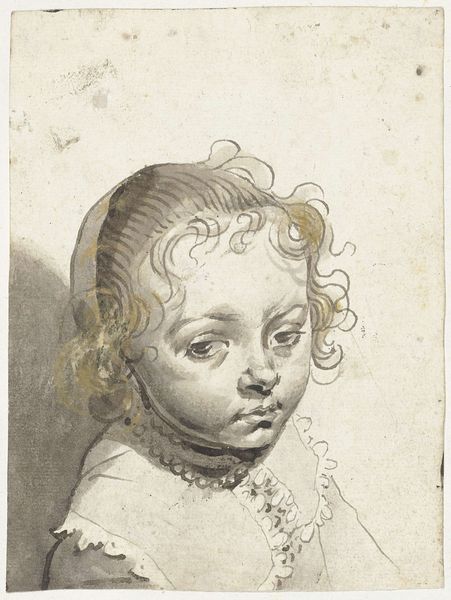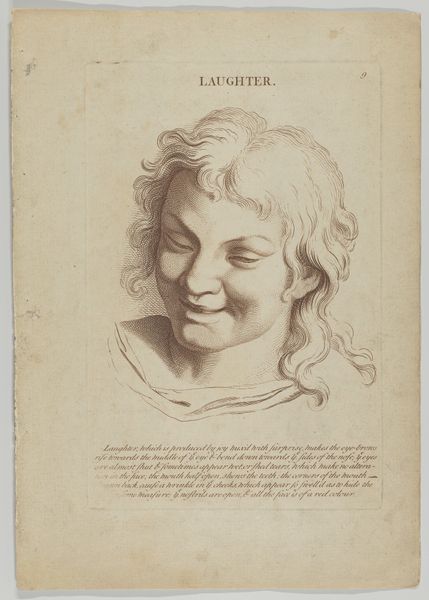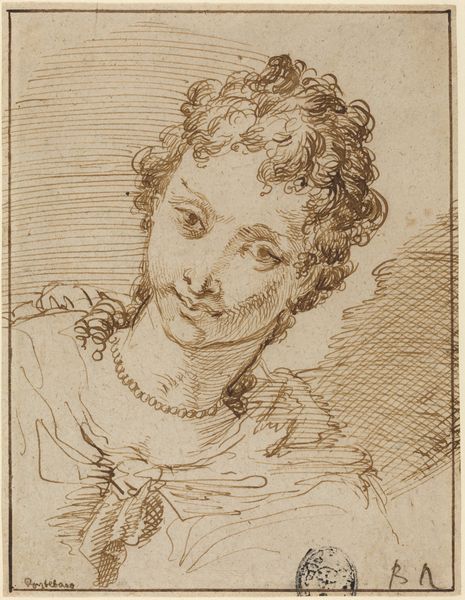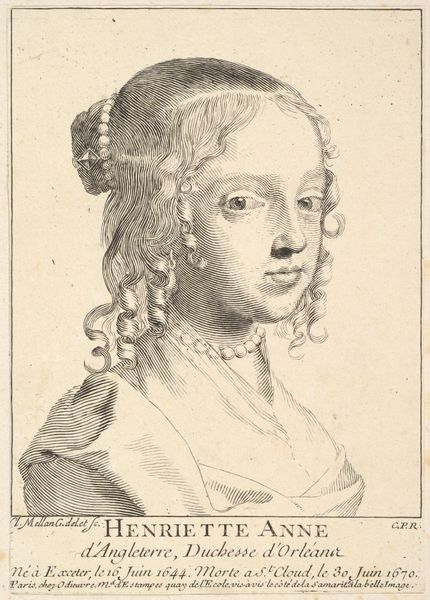
Head of a young girl wearing a jeweled headdress 1640 - 1650
0:00
0:00
drawing, print, etching
#
portrait
#
drawing
#
girl
#
baroque
#
head
# print
#
etching
#
figuration
#
portrait reference
#
jewelry
#
line
#
portrait drawing
Dimensions: Plate: 2 13/16 × 2 1/16 in. (7.1 × 5.3 cm)
Copyright: Public Domain
Curator: Before us is Wenceslaus Hollar's "Head of a young girl wearing a jeweled headdress", dating from 1640 to 1650. The artwork, now residing at the Metropolitan Museum of Art, is rendered using the printmaking techniques of etching and drawing. Editor: My immediate reaction is one of intrigue. There's an almost melancholic feel to her gaze. Her elaborate headdress seems at odds with the simplicity of her collar. Curator: It's interesting that you focus on the perceived contrast. Hollar was quite prolific in documenting the fashions and aristocratic visages of his time, serving as a recorder of status through attire. His work gained popularity through his prolific output of affordable prints that allowed a wider public audience to witness aristocratic fashion and bearing. Editor: But doesn't this proliferation also democratize fashion, even if just visually? By making these images accessible, it perhaps dismantles some of the exclusivity that the upper classes try to uphold. It opens up visual access, inviting commentary and aspirational or resistant approaches to identity. The adornments and presentation certainly give voice to notions of beauty that, I imagine, were quite charged. Curator: Undoubtedly. Hollar's prints offer a rich visual vocabulary for understanding 17th-century social structures. These pieces highlight not just fashion but also hint at the sitter's position in society and her familial context. The details would convey very specific messages to his contemporary audience. Editor: Right, and what’s particularly fascinating for me is decoding these now largely obscure signifiers within the artwork, to reflect on the ways power and beauty intersect even today. How much does personal style really push back against conventions? And who gets to even participate in fashion as a mode of self-expression? Curator: These etchings invite that deeper investigation. I wonder, however, if the girl portrayed here, via Hollar's craft, had as much agency over her image and presentation as the consumer of fashion does now. These images serve as a looking glass through time and a meditation on artifice itself. Editor: A provocative question. I’m left wondering about the young girl’s lived experience, beyond the headdress, in relation to prevailing notions of femininity then. It shows how a single portrait can be an entry point into thinking about identity, access, and resistance.
Comments
No comments
Be the first to comment and join the conversation on the ultimate creative platform.
